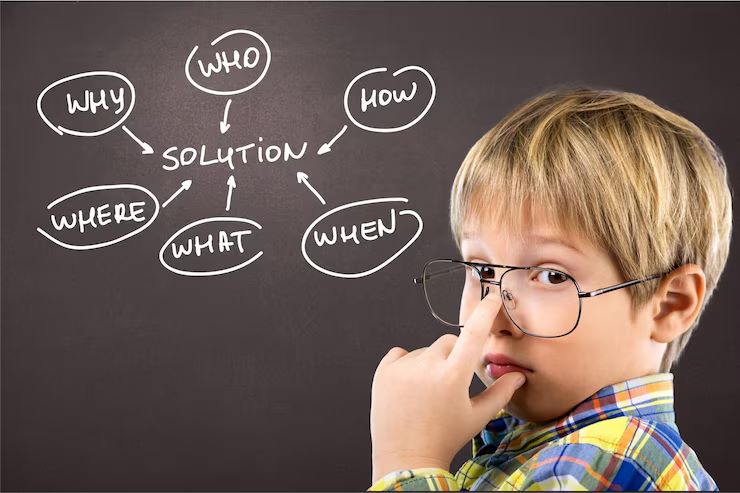Have you ever heard something that sounded true but later found out it wasn’t? Maybe a classmate told you a fun fact, or you saw something on YouTube that made you wonder, “Is that really right?” That’s where critical thinking comes in. It helps you decide whether something makes sense before you believe it.
Critical thinking is like being a detective for your brain. Instead of just believing everything you hear, you stop, ask questions, and look at the facts. Let’s explore how you can become a better thinker by using a few simple strategies.
What Is Critical Thinking?
Critical thinking means using your brain to ask, “Does this idea make sense?” Instead of quickly agreeing with something just because someone says it, you take time to think it through. It’s not about being rude or saying, “You’re wrong!” It’s about being smart and careful with what you believe.
Everyone can learn to think critically, and it helps you in school, with friends, and even when you’re online.
Strategy 1: Ask Questions
The first step to critical thinking is asking questions. When someone shares an idea or fact, ask things like:
- “How do you know that?”
- “Where did you hear it?”
- “Can you show me proof?”
Asking questions doesn’t mean you don’t trust someone. It just means you’re curious and want to understand more.
Strategy 2: Check the Source
Not everything you read or hear is true. Some websites or videos are just for fun or may even try to trick you. So always check: Where did this idea come from?
Is it a teacher, a book, or a trusted website? If it’s just a random post or something a friend heard from another friend, take a moment to double-check.
Strategy 3: Look at Both Sides
A great way to test an idea is to think about the opposite side. What do other people say about this topic? Can there be more than one answer?
For example, if someone says, “Cats are better than dogs,” ask yourself, “Why might someone think dogs are better?” Looking at both sides helps you understand the full picture.
Strategy 4: Use Your Own Experience
Sometimes, you can use what you already know to check if something makes sense. Think about what you’ve seen, heard, or learned in school. Does the new idea fit with what you already believe? Or does it sound too strange?
Your own experience is a powerful tool—but remember, it’s okay to change your mind if you find better information.
Strategy 5: Talk About It
Don’t be afraid to talk with a parent, teacher, or friend. Share what you heard and ask what they think. Sometimes other people can help you see things more clearly.

Final Thoughts: The Lifelong Value of Critical Thinking
In a world overflowing with information and misinformation alike, critical thinking serves as your most reliable compass. It’s not about doubting everything, but about giving ideas the careful consideration they deserve before accepting or rejecting them. By applying these strategies consistently, you’ll make more informed decisions, avoid manipulation, and develop a richer, more nuanced understanding of the world around you.
In ‘Crabby Crayon and The Truth About Blue’ by Kari Layton, Crabby is sure that only his version of blue is correct. But as he begins to ask questions and explore, he discovers that many shades of blue are valid too. The story is a gentle introduction to critical thinking for kids, showing how discovery often starts with thoughtful doubt.
Ready to explore critical thinking through a playful, engaging story? Order your copy now!

